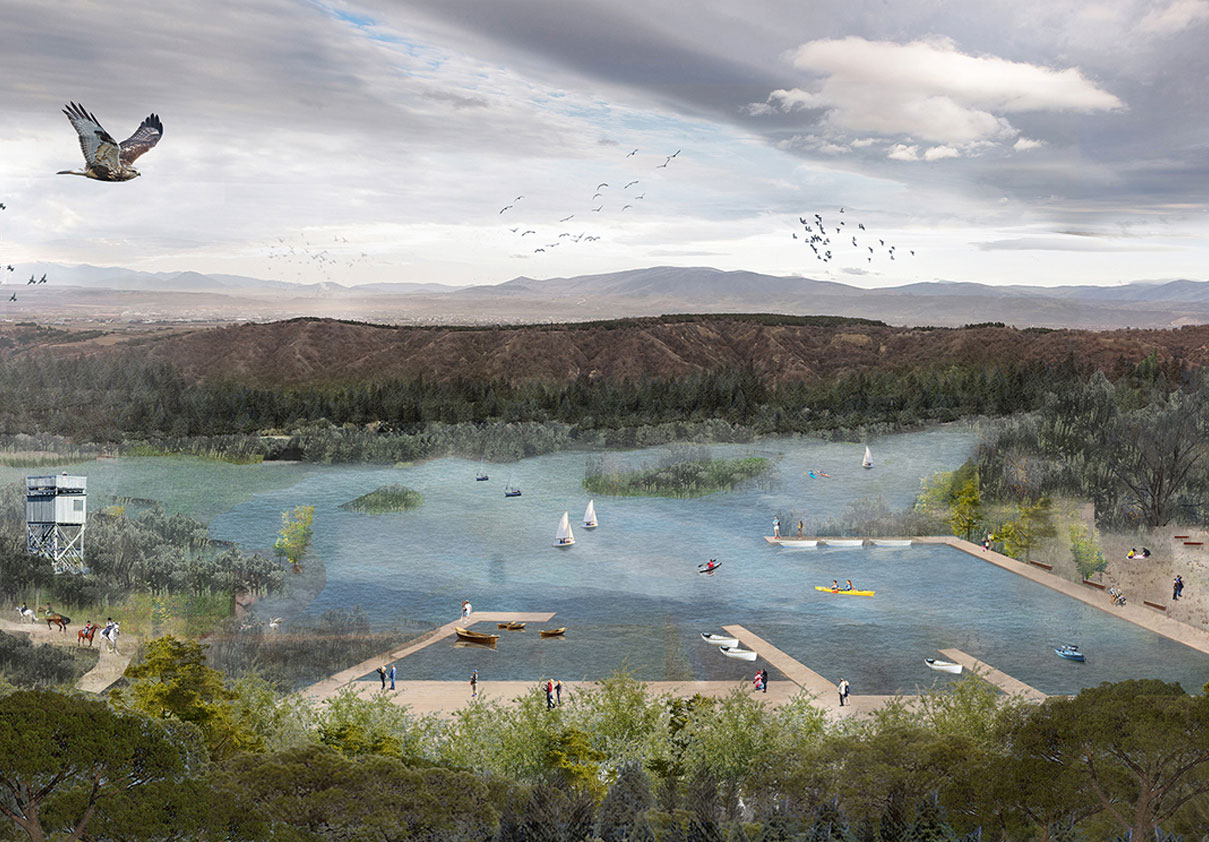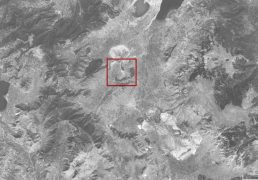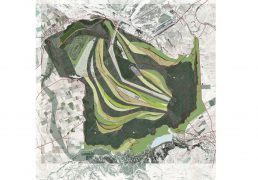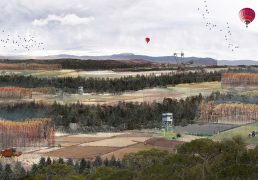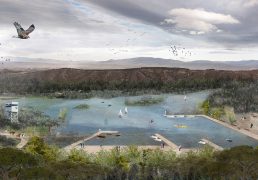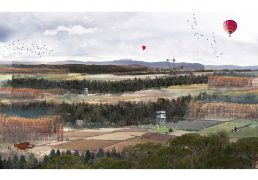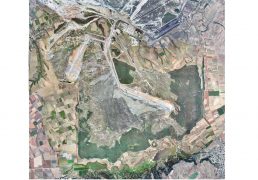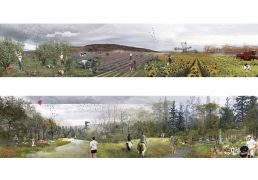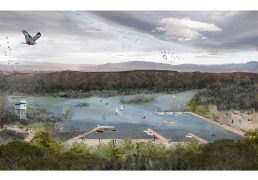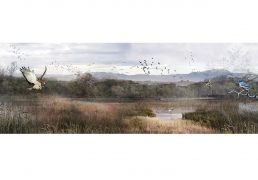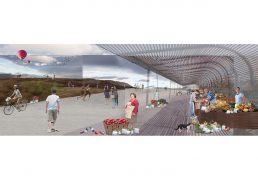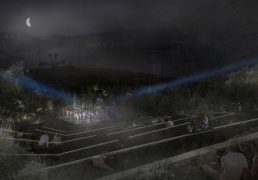The competition is about the environmental rehabilitation and transformation of the deteriorated lignite mines in the area of Aminteo in Western Macedonia, Greece (2.200ha). The main aim of the project is to facilitate the rebirth of a productive and fertile landscape, maintaining the site’s genius loci and the past use memory. Using ecology as a spatial structural tool of the restoration process, a new landscape entity is being produced. The project acts as a strategy in four thematic axes: ecology – landscape restoration, connectivity – circulation, uses – production and landscape identity – past industrial genius loci.
The core idea is the creation of a spatial organization system that will give geometry, form and life to the vast and out of scale place, facilitating the interconnection and habitats’ ecological recuperation. This proposed network defines clearly the blurred borders of the area and forms a series of successive zones of agriculture, forest plantations, new uses, and movements. The final result is being supported by landscape metabolism processes, configuring different characters and spatial qualities’ landscapes, which give birth to an ecologically restored, visually pleasant and healthy site. This restored landscape is connected with the surrounding areas and transformed into a pole of social attraction, bringing revitalization to the local economy. The site will recuperate its agricultural identity, but it will also offer uses of: ecotourism, recreation, culture, sports, scientific and renewable energy research, and an industrial heritage exhibition area.
Through these planning gestures, the project reconnects, interconnects and incorporates the existing degraded parts into a new landscape continuum. The new landscape canvas is experiencing a constant and dynamic ecological change through time, proposing at the same time a new innovative and ecological model for contemporary landscape restoration methods.
